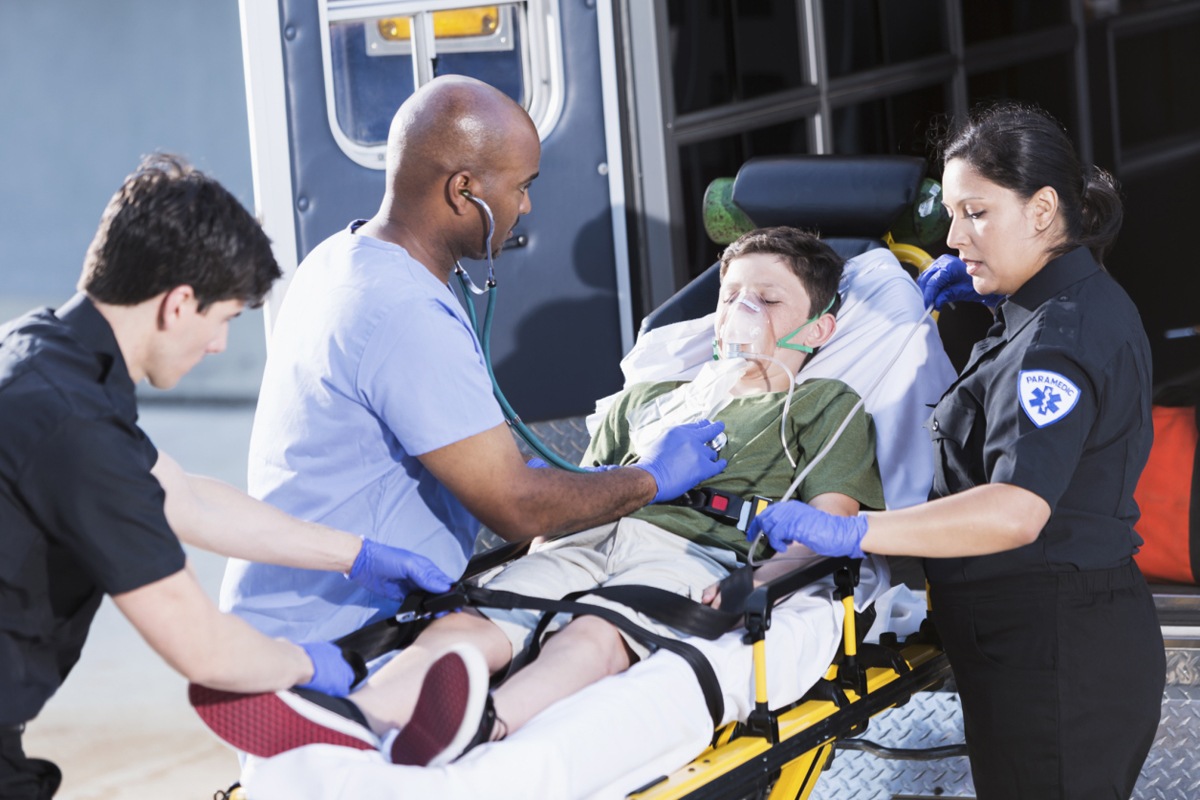
Tetralogy of Fallot: diagnosis, prenatal diagnosis and differential diagnosis
Tetralogy of Fallot (pronounced “Fallot’s tetralogy”) also known as “Steno-Fallot tetralogy” or “blue child syndrome” or “quadrilogy of Fallot” (hence the acronym TOF or ToF) is a congenital heart malformation, i.e. already present at birth, which classically has four anatomical elements that differentiate the heart of an infant with tetralogy of Fallot from the heart of a healthy infant
If tetralogy of Fallot is also associated with a ‘patent foramen ovale’ or an interatrial septal defect, the syndrome is called ‘pentalogy of Fallot’.
Diagnosis
The diagnosis is first based on the medical history and objective examination: if the mother is diabetic, smokes, over 40 years old and the baby is premature and presents cyanosis and breathing difficulties, the doctor should consider tetralogy of Fallot as a likely possibility.
The diagnostic doubt is then confirmed by three different essential diagnostic tests used to diagnose tetralogy of Fallot
- chest X-ray (chest X-ray),
- electrocardiogram (ECG),
- echocardiogram (ECG) and cardiac echocolordoppler.
Echocardiography determines the final diagnosis and usually provides sufficient information for planning surgical treatment.
In about half of all cases, tetralogy of Fallot is diagnosed before birth (prenatal diagnosis) thanks to the echocardiogram.
PROFESSIONALS IN NETWOK CHILD CARE: VISIT THE MEDICHILD BOOTH AT EMERGENCY EXPO
Chest X-ray in the diagnosis of tetralogy of Fallot
Before more sophisticated techniques became available, chest X-ray was the definitive diagnostic method.
The abnormal ‘coeur-en-sabot’ (boot-shaped’ heart) appearance of a heart with tetralogy of Fallot is classically visible on chest X-ray, although most children with tetralogy may not show this finding.
The hoof (or ‘boot’ or otherwise shoe-like) shape of the heart is due to the right ventricular hypertrophy and concave pulmonary arterial segment present in tetralogy of Fallot.
The lung fields are often dark (absence of interstitial lung signs) due to decreased pulmonary blood flow.
Electrocardiogram
An electrocardiogram (ECG) is one of the most important procedures for evaluating the heart.
Small electrodes are applied to specific areas of the body, near the chest, arm and neck.
Lead wires connect the electrodes to an ECG machine.
The electrical activity of the heart is then measured.
Normal electrical impulses help maintain proper blood flow by coordinating contractions in different areas of the heart.
These impulses are recorded by an ECG, which shows the speed, rhythm, intensity and timing of the electrical impulses as they travel through the heart.
Electrocardiography in children with tetralogy of Fallot shows right ventricular hypertrophy together with right axis deviation.
Right ventricular hypertrophy is noted on the ECG as high R waves in the V1 lead and deep S waves in the V5-V6 lead.
Echocardiogram and colordoppler in Fallot’s syndrome
Congenital heart defects are now diagnosed with echocardiography, which is quick, inexpensive and does not involve radiation; it is also very specific and can be performed prenatally, however, it is an ‘operator-dependent’ technique so the sonographer must be experienced.
Echocardiography establishes the presence of tetralogy of Fallot by demonstrating the anatomical changes classically present in tetralogy.
Many patients are diagnosed prenatally.
With the use of colordoppler, the flow within the heart and the degree of pulmonary stenosis are measured.
In the neonatal period, careful monitoring of the ductus arteriosus is performed to ensure that there is adequate blood flow through the pulmonary valve.
ECG EQUIPMENT? VISIT THE ZOLL BOOTH AT EMERGENCY EXPO
Cardiac catheterisation
In some cases, the anatomy of the coronary artery cannot be clearly visualised using an echocardiogram.
In this case, cardiac catheterisation can be performed.
Genetic testing
From a genetic point of view, it is important to screen for DiGeorge syndrome in all children with tetralogy of Fallot.
The differential diagnosis arises in the following diseases, which have similar symptoms and signs to those detectable in tetralogy of Fallot:
- atrial septal defects: these are a type of congenital cardiac anomaly in which there is an opening between the two atria of the heart. The load on the right side of the heart is increased due to these anomalies, as is the blood flow to the lungs: this leads to excessive blood flow to the lungs and an increased workload on the right side of the heart. Another common associated finding is right ventricular hypertrophy, also known as enlargement of the right ventricle.
- Ventricular defects: the presence of two atria and only one large ventricle is quite common in children with congenital anomalies. Symptoms of these diseases include an unusually high respiratory rate (tachypnoea), a bluish hue of the skin (cyanosis), wheezing, accelerated heartbeat (tachycardia) and/or an abnormally enlarged liver, which are similar to those of other congenital diseases (hepatomegaly), accumulation of fluid around the heart, which can lead to congestive heart failure;
- mitral valve stenosis: this is a rare cardiac anomaly that can occur at birth (congenital) or develop later in life (acquired). Aberrant narrowing of the mitral valve opening characterises this condition. Symptoms of congenital mitral valve stenosis include a wide range of respiratory infections, breathing difficulties, heart palpitations and coughing. Symptoms of acquired mitral valve stenosis also include a wide range such as loss of consciousness, angina, general weakness and abdominal discomfort.
Read Also:
Emergency Live Even More…Live: Download The New Free App Of Your Newspaper For IOS And Android
Eisenmenger Syndrome: Prevalence, Causes, Symptoms, Signs, Diagnosis, Treatment, Sporting Activities
Tachycardia: Important Things To Keep In Mind For Treatment
What Is Ablation Of Re-Entry Tachycardias?
Carotid Angioplasty And Stenting: What Are We Talking About?
Coronary Angioplasty, What To Do Post-Operatively?
Heart Patients And Heat: Cardiologist’s Advice For A Safe Summer
US EMS Rescuers To Be Assisted By Paediatricians Through Virtual Reality (VR)
Coronary Angioplasty, How Is The Procedure Performed?
Antiplatelet Drugs: Overview Of Their Usefulness
Tetralogy Of Fallot: Causes, Symptoms, Diagnosis, Treatment, Complications And Risks


